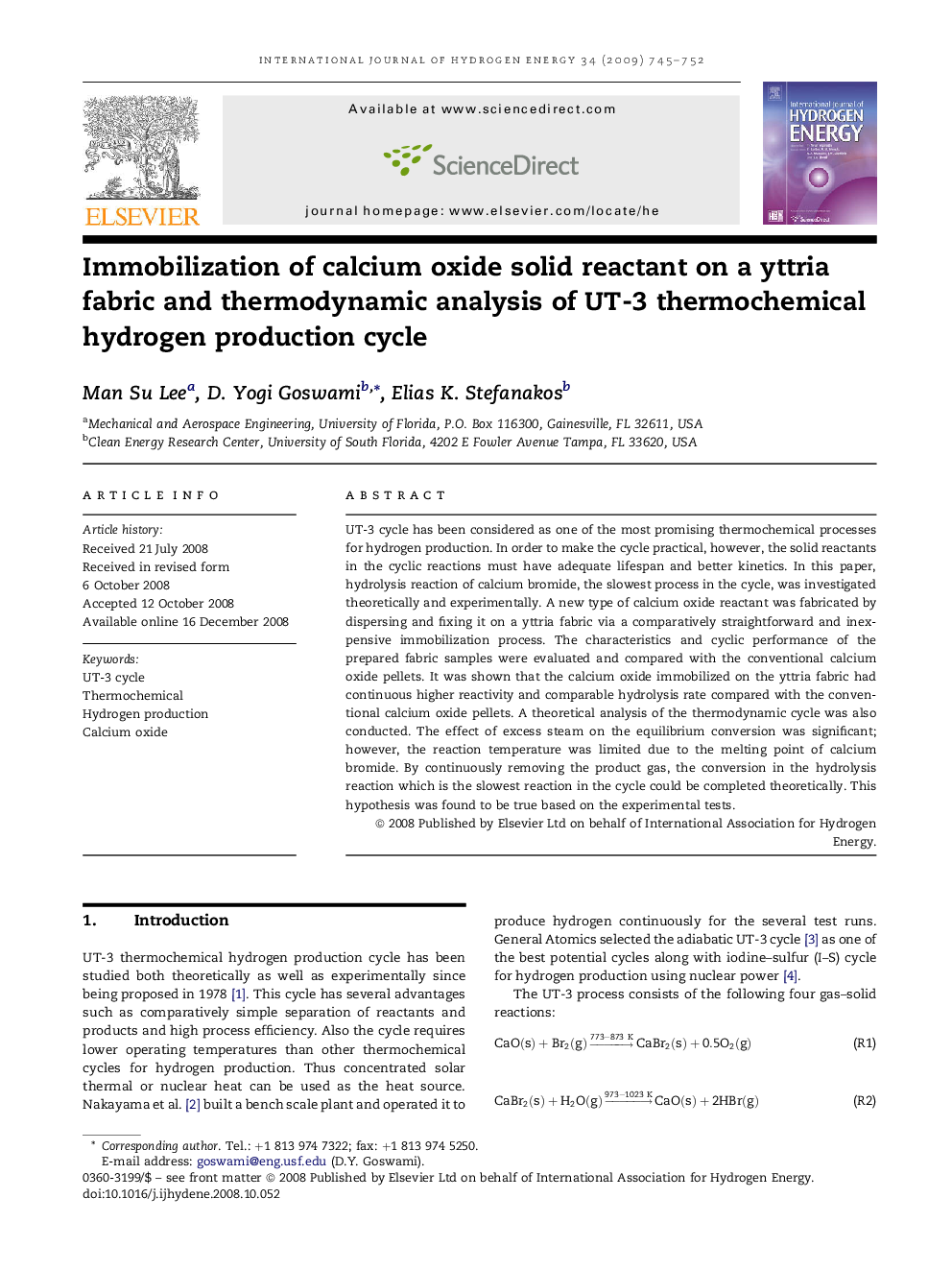| Article ID | Journal | Published Year | Pages | File Type |
|---|---|---|---|---|
| 1283456 | International Journal of Hydrogen Energy | 2009 | 8 Pages |
UT-3 cycle has been considered as one of the most promising thermochemical processes for hydrogen production. In order to make the cycle practical, however, the solid reactants in the cyclic reactions must have adequate lifespan and better kinetics. In this paper, hydrolysis reaction of calcium bromide, the slowest process in the cycle, was investigated theoretically and experimentally. A new type of calcium oxide reactant was fabricated by dispersing and fixing it on a yttria fabric via a comparatively straightforward and inexpensive immobilization process. The characteristics and cyclic performance of the prepared fabric samples were evaluated and compared with the conventional calcium oxide pellets. It was shown that the calcium oxide immobilized on the yttria fabric had continuous higher reactivity and comparable hydrolysis rate compared with the conventional calcium oxide pellets. A theoretical analysis of the thermodynamic cycle was also conducted. The effect of excess steam on the equilibrium conversion was significant; however, the reaction temperature was limited due to the melting point of calcium bromide. By continuously removing the product gas, the conversion in the hydrolysis reaction which is the slowest reaction in the cycle could be completed theoretically. This hypothesis was found to be true based on the experimental tests.
